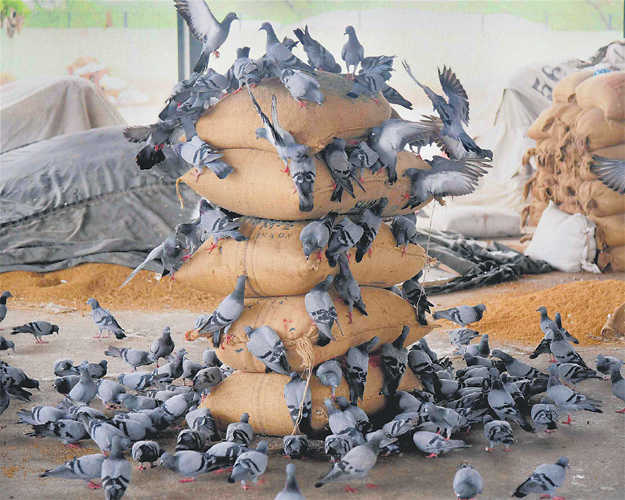There are two ways to spruce up our national food security: To produce more food grains, and to save every grain produced. We had been fortunate enough to take the nation from a food-deficit state to a food-sufficient one through the concerted efforts of our scientists and peasantry — facilitated by the government policies. However, we have been equally unfortunate due to the failure to safely store the grains produced with much labour and monetary investment.
India produces about 256 million tonnes of food grains per year (five-year average). While production is continuously increasing but post-harvest losses of food grains have remained static at around 10 per cent. That means the loss of food grains is also increasing with increase in food production. The more we produce, the more we lose. A major contributing factor to this loss is improper and insufficient storage facilities, resulting into about six per cent out of the total of 10 per cent loss. Insects, moulds and rats etc. inflict heavy damage to the stored grains. This is because of the high levels of moisture content of the grains.
Food Corporation of India (FCI) came into existence half a century ago, in the year 1965. With all the tall claims it is making concerning procurement, storage and distribution of food grains in the country; there are serious questions about its functioning. In a decade’s time, over one million tonne of foodgrain was wasted despite efforts to limit the damage. This much food grain would have been sufficient to feed over 10 million people for a year but it rotted in the FCI godowns.
The bumper rot of food grains is taking place in spite of the Supreme Court's 2010 Directive to the Centre to ensure free distribution of food grains to the hungry poor of the country, instead of it (grains) going down the drain. The acute lack of storage facilities in the form of godowns has forced various agencies to store the grains under Cover and Plinth (CAP) which is also done in a very arbitrary way. Sacks of grain-filled gunny bags being damaged by birds, rats and rain water — lying alongside the roads, railway lines and mandis etc, is a common site. This speaks volumes about our poor management and measures to save the produce. We have become accustomed to talk ing more of food production rather than its protection. It is surprising that we have compromised with grain loss rather than utilising the money that could have been earned with its sale/export. The existing storage facilities should have been upgraded and new ones built. Capital subsidy burden for renovation of existing government owned warehouses and construction of new ones, would largely be met by savings of the foodgrains in a short period of two to three years.
There are stringent laws to punish those found guilty of embezzlement of even a single penny. Wastage of food grains is nothing short of a criminal act and those at fault deserve to be dealt with accordingly. The government must rise to the occasion for immaculate execution of its policies to save every grain that has been produced with so much of labour and expenditure.
If it is unable to do so then the export of the grains may be facilitated. Failing on that account, as already directed by the Supreme Court of India, it is better to distribute it free among the hungry poor of the country rather than allowing it to rot. It is hoped that the Union and state governments would further strengthen their efforts to ensure judicious use of all the grains produced in the country. The key to second Green Revolution lies equally in food production and food protection.
Gursharan Singh is the former Dean of Postgraduate Studies PAU & MS Sidhu the former Head, Department of Economics at PAU, Ludhiana. The views expressed are personal
Unlock Exclusive Insights with The Tribune Premium
Take your experience further with Premium access.
Thought-provoking Opinions, Expert Analysis, In-depth Insights and other Member Only Benefits
Already a Member? Sign In Now










